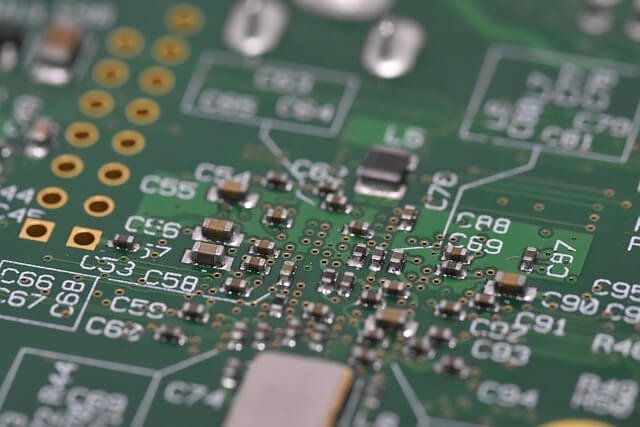“Silicon chips power the world we live in, but how much do you really know about these tiny wonders? From their humble beginnings to their current dominance in technology, silicon computer chips have an incredible story to tell. Join us as we uncover 10 amazing things you never knew about this game-changing invention!”
How Silicon Computer Chips are Made
The first step in making a silicon computer chip is to grow a large single crystal of silicon. This is usually done using the Czochralski process, which involves melting a silicon seed crystal in a crucible of molten silicon, then slowly withdrawing the seed crystal while rotating it. As the seed crystal is withdrawn, new silicon atoms attach to it and form a large, single-crystal ingot.
Once the ingot has cooled and solidified, it is cut into thin wafers using a diamond saw. The wafers are then cleaned and polished to remove any contaminants that could interfere with further processing.
Next, the wafers are subjected to a series of chemical vapour deposition (CVD) processes that deposit thin layers of other materials on their surfaces. These layers will form the basis of the electrical circuits on the finished chip.
Once all the required layers have been deposited, they are patterned using photolithography. This process involves projecting a pattern onto the wafer surface and using it to etch away exposed areas of material. The resulting patterns define the individual circuit elements on the chip.
The final step is to connect all these circuit elements together by bonding them to metal contacts on the surface of the wafer. This process, known as wire bonding, completes the manufacturing process and produces a functioning silicon computer chip.

The Importance of Silicon Computer Chips
As the heart of any computer, silicon computer chips are important to the function and speed of a machine. But what makes these tiny components so essential?
Here are four things you may not have known about silicon computer chips:
1. They’re made from sand. Yep, that ubiquitous beach and playground material is actually the building block for these high-tech chips. In fact, more than 90% of the world’s supply of commercial-grade silicon comes from just one place: Australia.
2. They’re designed using transistors. A transistor is a switch that can be turned on or off electronically, which is how information is processed in a chip. The more transistors on a chip, the more complex calculations it can perform — which is why newer generations of chips are able to pack ever-more powerful processors into ever-smaller spaces.
3. They need to be cooled. Even though they’re made mostly of sand, silicon chips generate a lot of heat when they’re in use. That’s why most computers have some kind of cooling system (often involving fans) to keep them running at peak performance without overheating.
4. They power everything from phones to cars. While desktop and laptop computers are still the most common type of machine that uses silicon chips, they’re far from the only ones. Chips are also found in smartphones, tablets, gaming consoles, and even some

How Silicon Computer Chips Work
In order to understand how silicon computer chips work, it is important to first understand what a silicon computer chip is. A silicon computer chip is a small piece of silicon that contains a lot of transistors. Transistors are electronic components that can control the flow of electricity. They are used in computer chips because they can switch very quickly between two states, which makes them ideal for use in digital circuits.
The way that transistors work is by controlling the flow of electrons through a material. When a transistor is turned on, it allows electrons to flow freely through it. When a transistor is turned off, it blocks the flow of electrons. This switching action is what allows transistors to be used in digital circuits. In order for a transistor to switch from one state to another, a small amount of electric current must be applied to the transistor. This current is called the “gate” current.
Silicon computer chips are made up of millions of transistors that are all interconnected with each other. The pattern of interconnections between the transistors on a chip is called the “circuit design.” The circuit design for a particular chip is what determines what the chip will be used for. For example, there are chips designed specifically for use in computers, cell phones, and other electronic devices.
To create a silicon computer chip, manufacturers start with a large silicon wafer. The wafer is then cut into smaller pieces, called “dies.” Each die contains all.
The History of Silicon Computer Chips
The history of computer chips is fascinating. They are truly amazing devices that have changed the world. Here is a brief overview of the history of these amazing devices.
The first computer chips were created in the early 1950s. At that time, they were made from germanium. However, germanium was not an ideal material for making computer chips. It was expensive and had a tendency to break down over time.
In 1954, a scientist named Gordon Moore discovered that silicon was a much better material for making computer chips. Silicon was more abundant and less expensive than germanium. Moore’s discovery revolutionized the computer chip industry.
Today, computer chips are made from silicon and other materials such as gallium arsenide and indium phosphide. They are incredibly small, with some containing millions of transistors. Computer chips are used in almost every electronic device imaginable, from phones to computers to cars.

10 Amazing Facts About Silicon Computer Chips
You probably don’t give much thought to the tiny silicon computer chips that power your devices. But these little marvels are responsible for some pretty amazing things.
Here are some facts that may surprise you about silicon computer chips.
1. They’re extremely small. The average silicon chip is less than 1 square inch in size. That’s smaller than a penny!
2. They’re very thin. Most silicon chips are only about 0.15mm thick, which is about the thickness of a human hair.
3. They’re incredibly fast. A typical silicon chip can process billions of calculations per second.
4. They use very little power. A single silicon chip can operate on just a few volts of electricity.
5. They’re very durable. With proper care, a silicon chip can last for decades without any degradation in performance.

Conclusion
As it turns out, silicon computer chips are an incredible feat of modern engineering. The combination of their small size, low power consumption and incredibly high speeds make them invaluable components in the ever-evolving world of technology. We hope this article has provided you with a better understanding of just how amazing these marvels truly are and that you can appreciate the sheer complexity behind them even more. So if you ever find yourself wondering about the power behind your computer or device, don’t forget to give a nod to those tiny but mighty silicon computer chips tucked away inside!
See More: High Speed Internet in my Area

